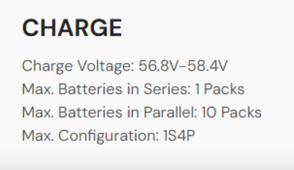no, it depends on invertersThanks for the explanation.
Is there an acceptable voltage range for 48V systems?
it's gonna be like 45-60volts or something for most stuff
data sheets will tell you
There are some older inverters, for example, that pre-date the lifepo4 batteries and thus won't say they are compatible with them... not sure if they are or aren't as far as voltage goes
yep I saw that, that's likely non technical person writing that or they did it on purpose for confusion reasons I said previouslyView attachment 217479
Enjoybot's 5,120Wh battery has a nominal votage of 48V without mentioning 51.2V.
That's confusing.



